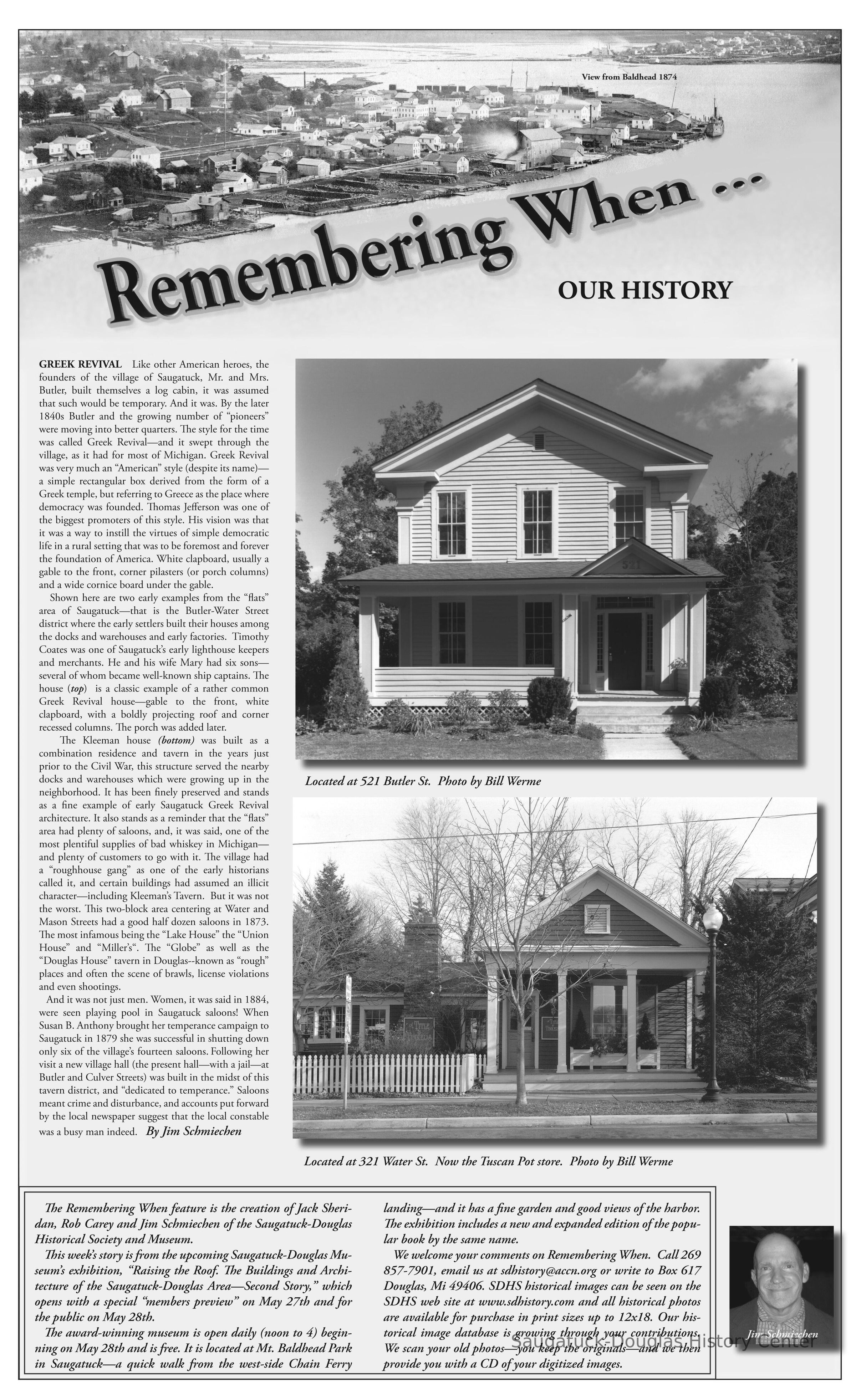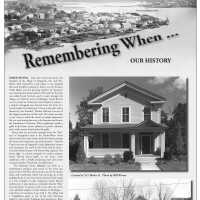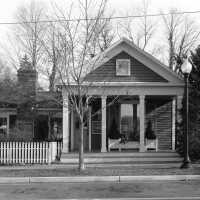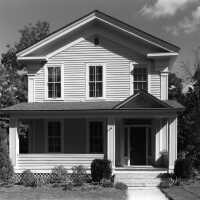Greek Revival Style

2021.87.68
GREEK REVIVAL Like other American heroes, the founders of the village of Saugatuck, Mr. and Mrs. Butler, built themselves a log cabin, it was assumed that such would be temporary. And it was. By the later 1840s Butler and the growing number of “pioneers” were moving into better quarters. The style for the time was called Greek Revival—and it swept through the village, as it had for most of Michigan. Greek Revival was very much an “American” style (despite its name)—a simple rectangular box derived from the form of a Greek temple, but referring to Greece as the place where democracy was founded. Thomas Jefferson was one of the biggest promoters of this style. His vision was that it was a way to instill the virtues of simple democratic life in a rural setting that was to be foremost and forever the foundation of America. White clapboard, usually a gable to the front, corner pilasters (or porch columns) and a wide cornice board under the gable. Shown here are two early examples from the “flats” area of Saugatuck—that is the Butler-Water Street district where the early settlers built their houses among the docks and warehouses and early factories. Timothy Coates was one of Saugatuck’s early lighthouse keepers and merchants. He and his wife Mary had six sons—several of whom became well-known ship captains. The house (top) is a classic example of a rather common Greek Revival house—gable to the front, white clapboard, with a boldly projecting roof and corner recessed columns. The porch was added later. The Kleeman house (bottom) was built as a combination residence and tavern in the years just prior to the Civil War, this structure served the nearby docks and warehouses which were growing up in the neighborhood. It has been finely preserved and stands as a fine example of early Saugatuck Greek Revival architecture. It also stands as a reminder that the “flats” area had plenty of saloons, and, it was said, one of the most plentiful supplies of bad whiskey in Michigan—and plenty of customers to go with it. The village had a “roughhouse gang” as one of the early historians called it, and certain buildings had assumed an illicit character—including Kleeman’s Tavern. But it was not the worst. This two-block area centering at Water and Mason Streets had a good half dozen saloons in 1873. The most infamous being the “Lake House” the “Union House” and “Miller’s“. The “Globe” as well as the “Douglas House” tavern in Douglas--known as “rough” places and often the scene of brawls, license violations and even shootings. And it was not just men. Women, it was said in 1884, were seen playing pool in Saugatuck saloons! When Susan B. Anthony brought her temperance campaign to Saugatuck in 1879 she was successful in shutting down only six of the village’s fourteen saloons. Following her visit a new village hall (the present hall—with a jail—at Butler and Culver Streets) was built in the midst of this tavern district, and “dedicated to temperance.” Saloons meant crime and disturbance, and accounts put forward by the local newspaper suggest that the local constable was a busy man indeed. By Jim Schmiechen
Remembering When
Winthers, Sally
Digital data in CatalogIt
Carey, Rob 1928-2019Sheridan, John "Jack" O. 1938-Schmiechen, James A.Coates, Timothy S. 1810-1875Anthony, Susan B.321 Water St./Saugatuck Tea Party/Tuscan Pot/Kleeman's Tavern
Local Observer
12/31/2021
11/18/2023



